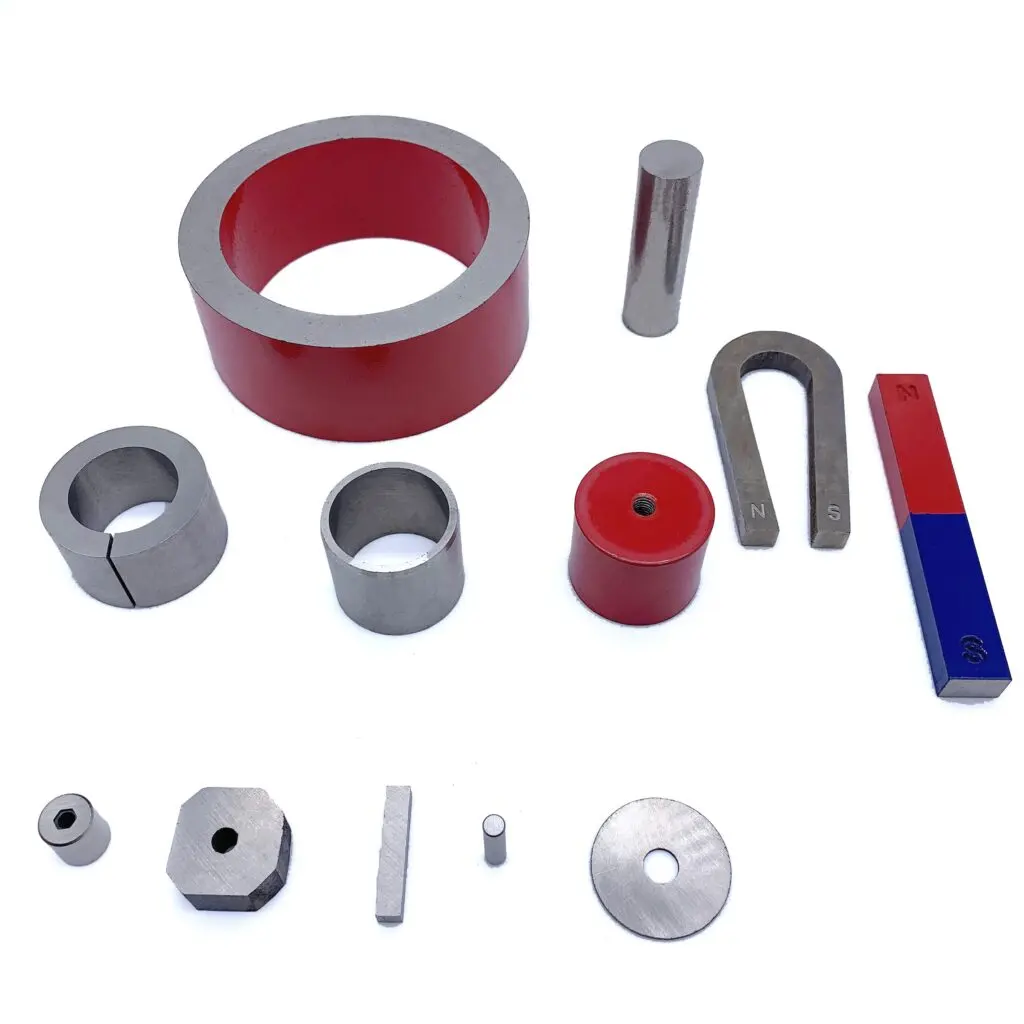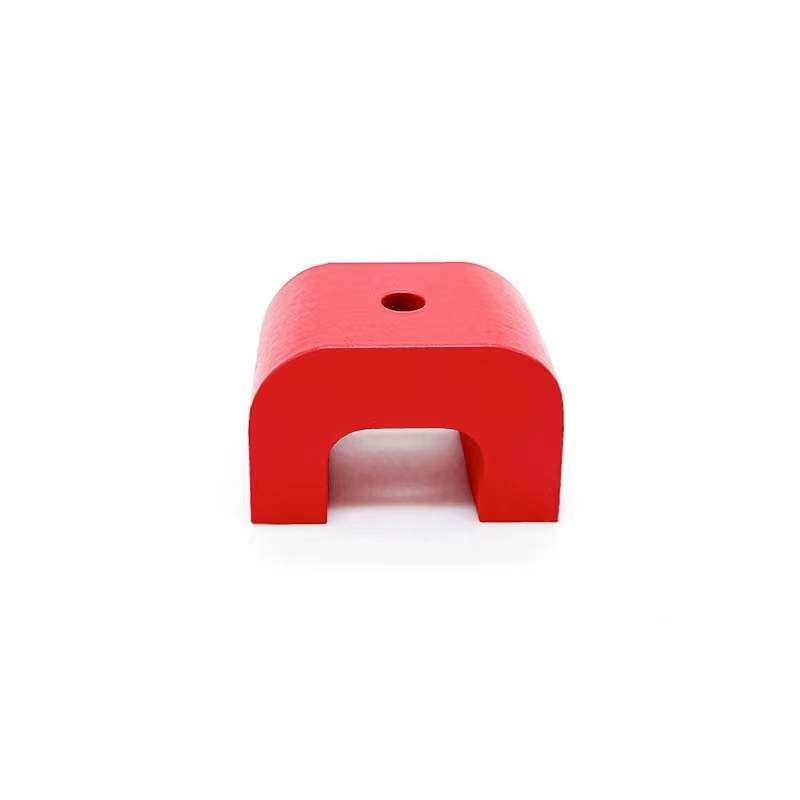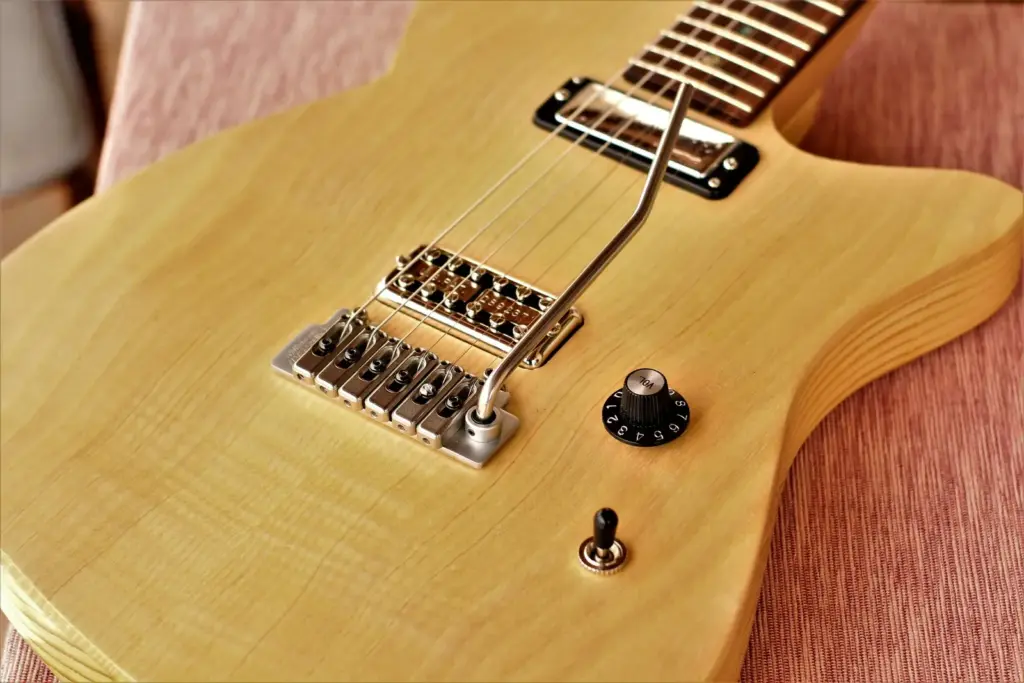Cast Alnico Magnets Manufacturer in China
Cast alnico magnets, short for aluminum-nickel-cobalt alloys, have been a staple in magnetic technology since the 1930s. Produced through a casting process—where molten alloy is poured into molds and cooled—these magnets offer exceptional strength and stability. Unlike modern rare-earth options like neodymium, cast alnico excels in high-temperature environments and provides a warm, balanced magnetic field. They’re widely used in everything from electric guitars to industrial sensors, blending vintage reliability with modern utility. In this guide, we’ll dive into their properties, types, applications, and how they compare to alternatives, helping you decide if cast alnico is right for your needs.
Key Properties and Advantages
Cast alnico magnets are renowned for their unique blend of durability and performance. Here’s what makes them stand out:
- High Temperature Resistance: They maintain magnetic strength up to 550°C (1022°F), far surpassing neodymium (which demagnetizes around 80°C/176°F)—ideal for hot environments like engines or ovens.
- Strong Magnetic Field: With energy products up to 10 MGOe (mega Gauss-Oersteds), they provide reliable holding power without the brittleness of sintered versions.
- Corrosion Resistance: Naturally resistant to rust, they require minimal coatings, making them cost-effective for long-term use.
- Machinability: Easy to shape and machine post-casting, allowing custom designs like rods, bars, or horseshoes.
- Stability and Longevity: Excellent remanence (residual magnetism) ensures consistent performance over decades, with low coercivity for applications needing demagnetization resistance.
Compared to sintered alnico (made by compressing and heating powder), cast versions offer coarser grain structure for higher magnetic output but may have slight inconsistencies. They’re less powerful than neodymium but win in stability and cost for non-extreme strength needs.


Types of Cast Alnico Magnets
Cast alnico comes in various grades, each tailored to specific needs based on composition and magnetic properties:
- Alnico 2 and 3: Softer magnets with warm, balanced fields; common in vintage guitar pickups for smooth tones (e.g., energy product: 1.4-1.7 MGOe).
- Alnico 5: The most popular, offering high coercivity and bright, punchy performance (up to 5.5 MGOe); used in speakers and motors.
- Alnico 8: Strongest cast type with excellent temperature stability (up to 9 MGOe); ideal for sensors and high-precision instruments.
Shapes include cylinders, blocks, and custom forms, with sizes ranging from small 0.5″ rods to large 6″ bars.
Step-by-Step Manufacturing Process of Cast AlNiCo Magnets
1. Raw Material Preparation
The journey starts with selecting high-purity ingredients. AlNiCo alloys typically consist of:
- Iron (Fe): 40-60% (base material)
- Cobalt (Co): 20-30% (enhances magnetic strength)
- Nickel (Ni): 10-20% (improves corrosion resistance)
- Aluminum (Al): 5-10% (boosts coercivity)
- Optional additives like copper (Cu) or titanium (Ti) for specific grades (e.g., AlNiCo 5 or 8).
These materials are weighed precisely to match the desired grade. Impurities are minimized to ensure optimal magnetic properties. Fun fact: The exact composition can be tweaked for isotropic (uniform magnetism) or anisotropic (directional) magnets.
2. Melting and Alloying
The raw materials are loaded into an induction or electric arc furnace and heated to around 1,500-1,600°C. This high temperature melts everything into a homogeneous liquid alloy. Stirring ensures even mixing, and the melt is often degassed to remove trapped gases that could cause defects.
- Key Tip: For anisotropic magnets, the alloy is sometimes treated with a magnetic field during melting to align crystal structures early on.
The molten alloy is then refined to remove slag or impurities, preparing it for casting.
3. Casting into Molds
Here’s where the “cast” in cast AlNiCo comes in! The molten alloy is poured into pre-heated sand molds, shell molds, or permanent metal molds designed for the final shape (e.g., bars, rings, or horseshoes).
- Cooling Control: As the alloy solidifies, it’s cooled slowly in a controlled environment. For anisotropic magnets, this step often includes applying an external magnetic field (field cooling) to align the magnetic domains, boosting performance by up to 30-50%.
- Solidification Time: This can take minutes to hours, depending on size. The result is a rough casting with a columnar grain structure, which is crucial for strong magnetism.
4. Heat Treatment and Annealing
Fresh castings are brittle and not fully magnetic yet. Heat treatment refines the microstructure:
- Solution Annealing: Heated to 1,200-1,300°C and held for hours to dissolve phases evenly.
- Aging: Cooled slowly or quenched, then aged at lower temperatures (500-600°C) to precipitate magnetic phases like Fe-Co.
- Magnetic Field Application: During cooling, a strong magnetic field (up to 10,000 Oe) is applied to enhance anisotropy.
This step optimizes coercivity and remanence, turning the casting into a high-performance magnet.
5. Machining and Finishing
Cast AlNiCo is hard and wear-resistant, so machining is done with diamond tools or grinding wheels:
- Rough castings are cut, ground, or drilled to precise dimensions.
- Surfaces are polished for smoothness, and edges are deburred.
- Optional coatings (e.g., paint or plating) protect against corrosion in humid environments.
Tolerance levels can be as tight as ±0.05 mm for precision applications.
6. Magnetization and Testing
The final step: The machined piece is placed in a powerful electromagnet or pulse magnetizer to saturate it with a permanent magnetic field. Testing follows:
- Magnetic properties (e.g., Br, Hc) are measured using hysteresis graphs.
- Quality checks for cracks, density, and uniformity ensure it meets standards like ISO 9001.
If all passes, the magnet is ready for packaging and shipping!
Real-World Applications
Cast alnico magnets thrive in demanding scenarios where reliability trumps raw power:
- Music and Audio: Essential in guitar pickups (e.g., Fender Stratocaster or Gibson humbuckers) for their warm sustain and vintage vibe. They shape tone by influencing string vibration detection.
- Industrial and Automotive: Used in electric motors, generators, and brakes for their heat resistance—perfect for automotive sensors or holding fixtures in manufacturing.
- Sensors and Instruments: In medical devices like MRI machines or flow meters, their stability ensures accurate readings without frequent recalibration.
- Aerospace and Defense: Employed in compasses, gyroscopes, and holding mechanisms due to corrosion resistance and durability in extreme conditions.
- Everyday Uses: From magnetic separators in recycling to educational tools in physics labs.
Their versatility makes them a go-to for engineers prioritizing longevity over maximum strength.

Get In Touch
Join hundreds of satisfied customers who trust HS Magnet for their critical magnetic applications.
Contact our expert team for technical consultations, custom solutions, or product inquiries

